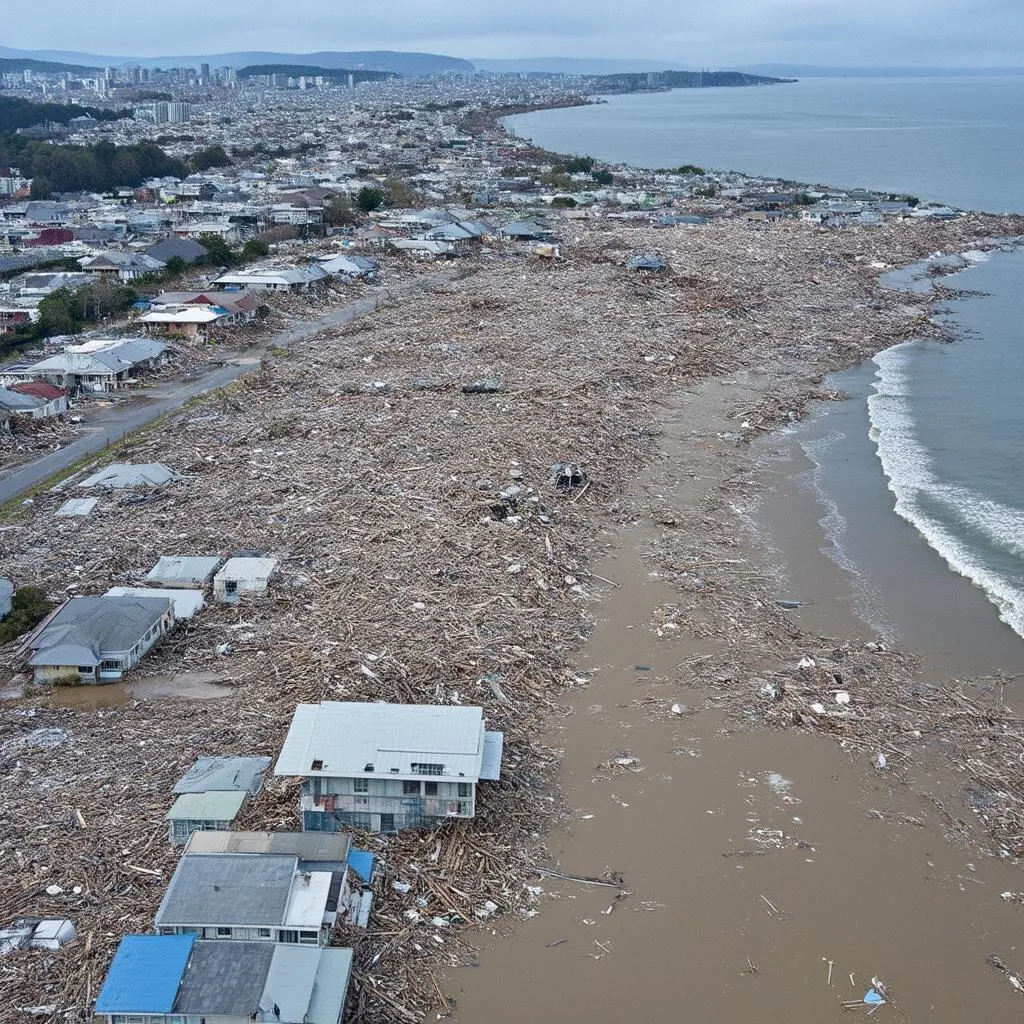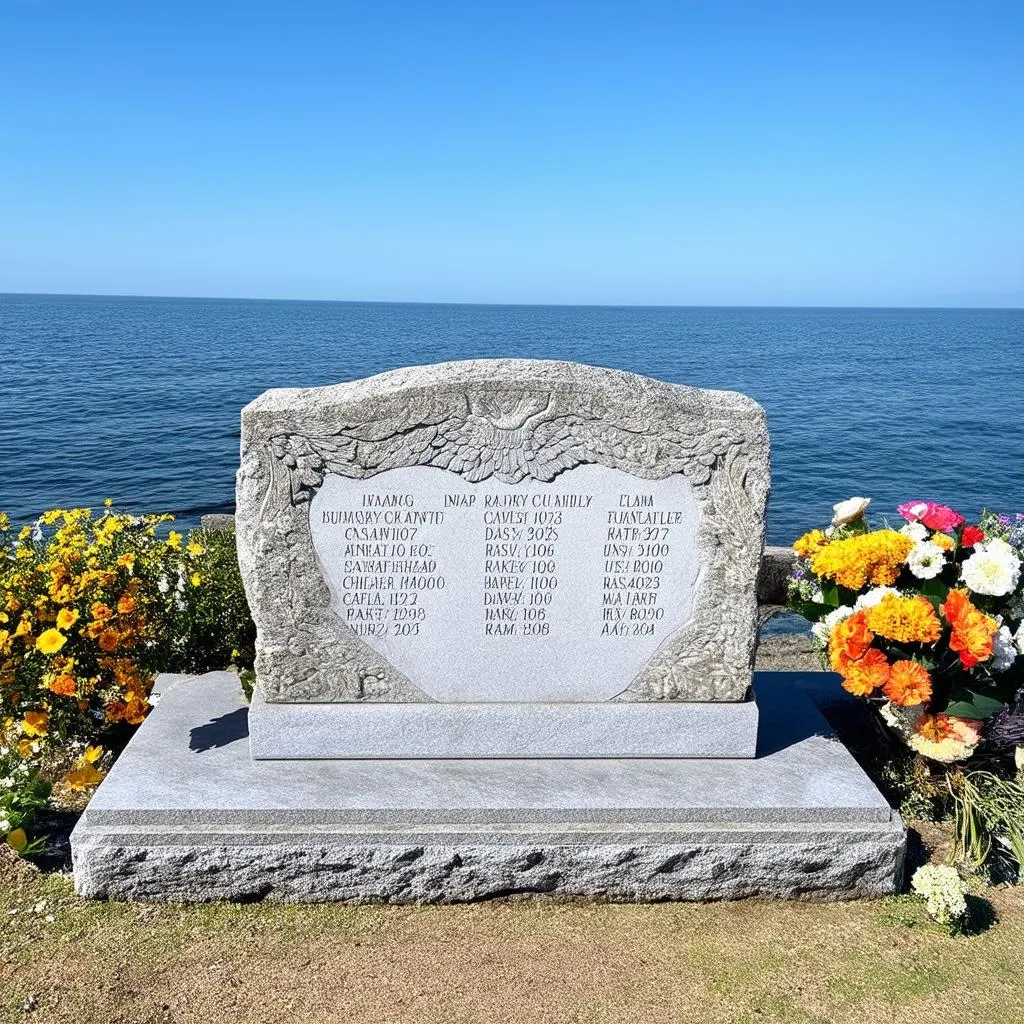Remember that breathtaking photo of a lone house swept inland by the 2011 Japan tsunami? It captivated the world, serving as a chilling testament to the sheer power of nature. But beyond the images, have you ever wondered, “Just how far did the tsunami travel?” Let’s delve into this question, exploring the impact of the tsunami and the remarkable resilience of the human spirit in the face of disaster.
The Unfathomable Reach of the Waves
The 2011 Tohoku earthquake, a colossal 9.0 on the Richter scale, unleashed a tsunami that reached staggering distances. While the waves caused significant damage along Japan’s coastline, their reach extended far beyond, with reports of the tsunami’s impact felt as far away as:
- The Coast of California: Imagine the surprise of surfers in California, witnessing unusual currents and a rapid rise in sea levels, a ripple effect of the disaster unfolding across the Pacific.
- South America: Even the shores of Chile, thousands of miles from Japan, experienced the tsunami’s power with strong currents and noticeable changes in sea level.
But the most pressing question remains – how far inland did the tsunami travel within Japan?
A Trail of Destruction and Displacement
In some areas of Japan, the tsunami waves surged inland for an astonishing six miles, swallowing entire towns and villages. Imagine the force required to carry a fishing vessel miles inland, leaving it stranded amidst the rubble of what was once someone’s home. This was the reality for many coastal communities in Japan.
The town of Rikuzentakata, known for its lush pine forests, saw its landscape dramatically altered as the tsunami wiped out almost everything in its path. Today, the area serves as a stark reminder of the tsunami’s destructive power while also showcasing the ongoing efforts of replanting and rebuilding.
Understanding the Science Behind the Tsunami’s Reach
Several factors contribute to how far a tsunami can travel inland:
- Topography: Coastal areas with flat, low-lying land are more susceptible to extensive inland flooding.
- The shape of the coastline: Bays and inlets can funnel tsunami waves, increasing their height and destructive potential.
 Devastated landscape after the Japan Tsunami
Devastated landscape after the Japan Tsunami
Lessons Learned and the Spirit of Recovery
The 2011 Japan tsunami was a stark reminder of the unpredictable power of nature. It prompted significant advancements in:
- Tsunami warning systems: More sophisticated systems are now in place to provide faster and more accurate warnings, potentially saving countless lives in future events.
- Disaster preparedness: The event highlighted the importance of community preparedness, with Japan reinforcing its infrastructure and disaster response protocols.
 A memorial for the victims of the 2011 Japan Tsunami
A memorial for the victims of the 2011 Japan Tsunami
Traveling to Japan?
If you’re planning a trip to Japan, rest assured that the country has shown incredible resilience in rebuilding. Consider visiting the affected areas to witness firsthand the ongoing recovery efforts and pay homage to the strength of the human spirit. You can learn more about responsible travel and find resources to support recovery efforts on websites like travelcar.edu.vn.
For a deeper understanding of how far a tsunami can travel inland, you can also read “The Science of Tsunamis” available on travelcar.edu.vn. This resource provides valuable insights into the factors that influence a tsunami’s reach and the measures taken to mitigate its impact.
Remember, knowledge is power. By understanding the science behind these natural disasters and learning from past events, we can better prepare ourselves and contribute to safer and more resilient communities.